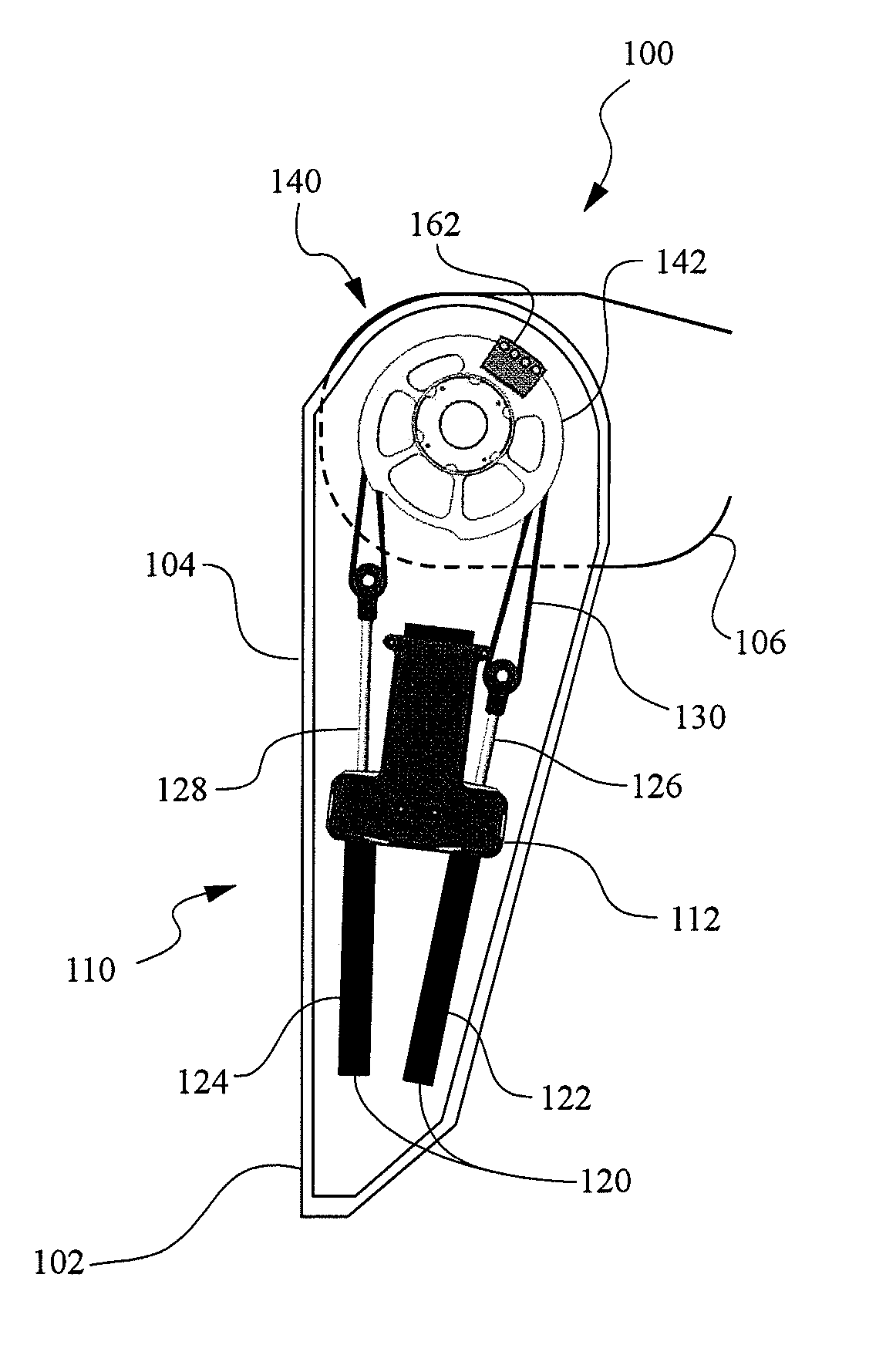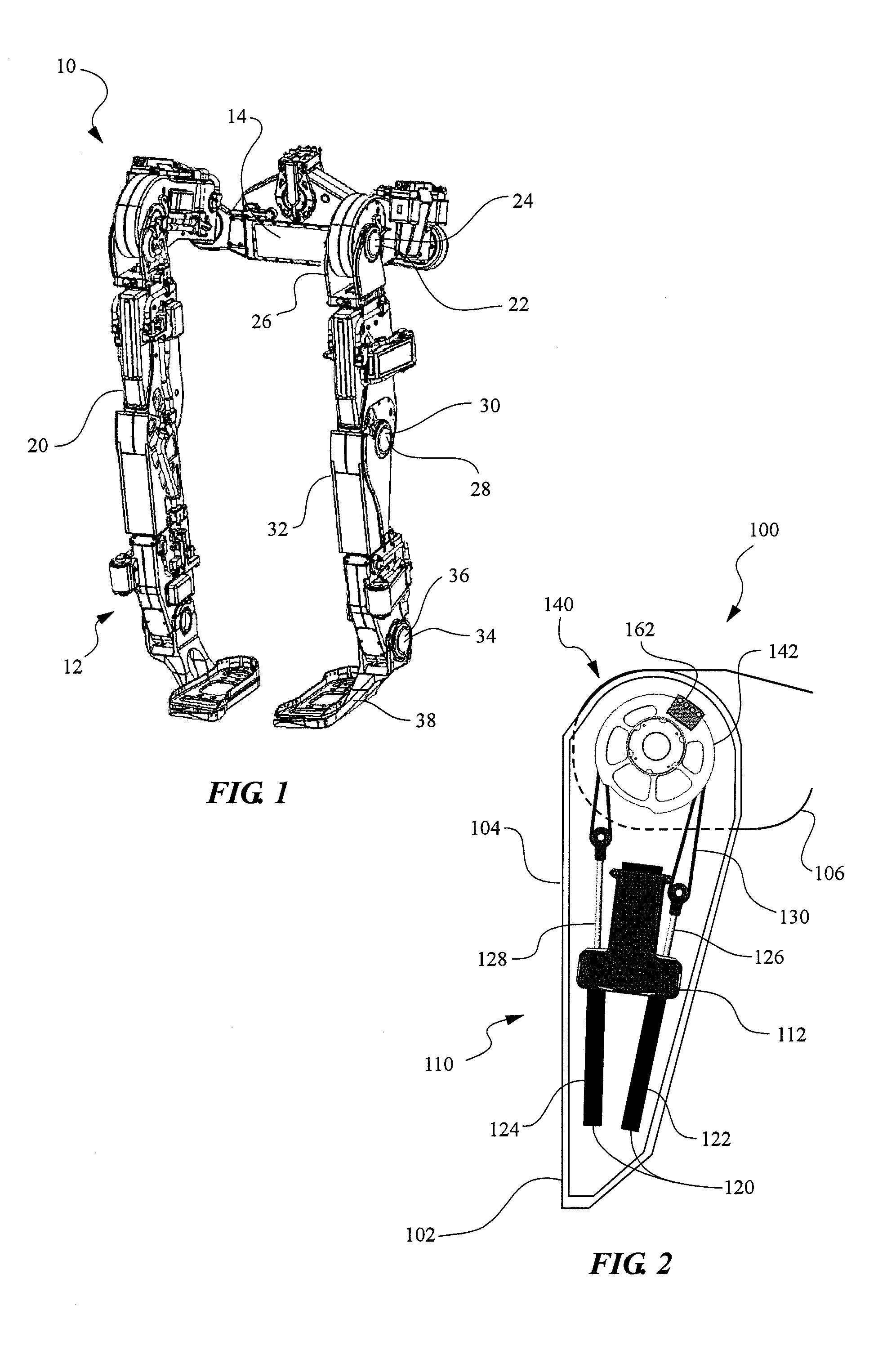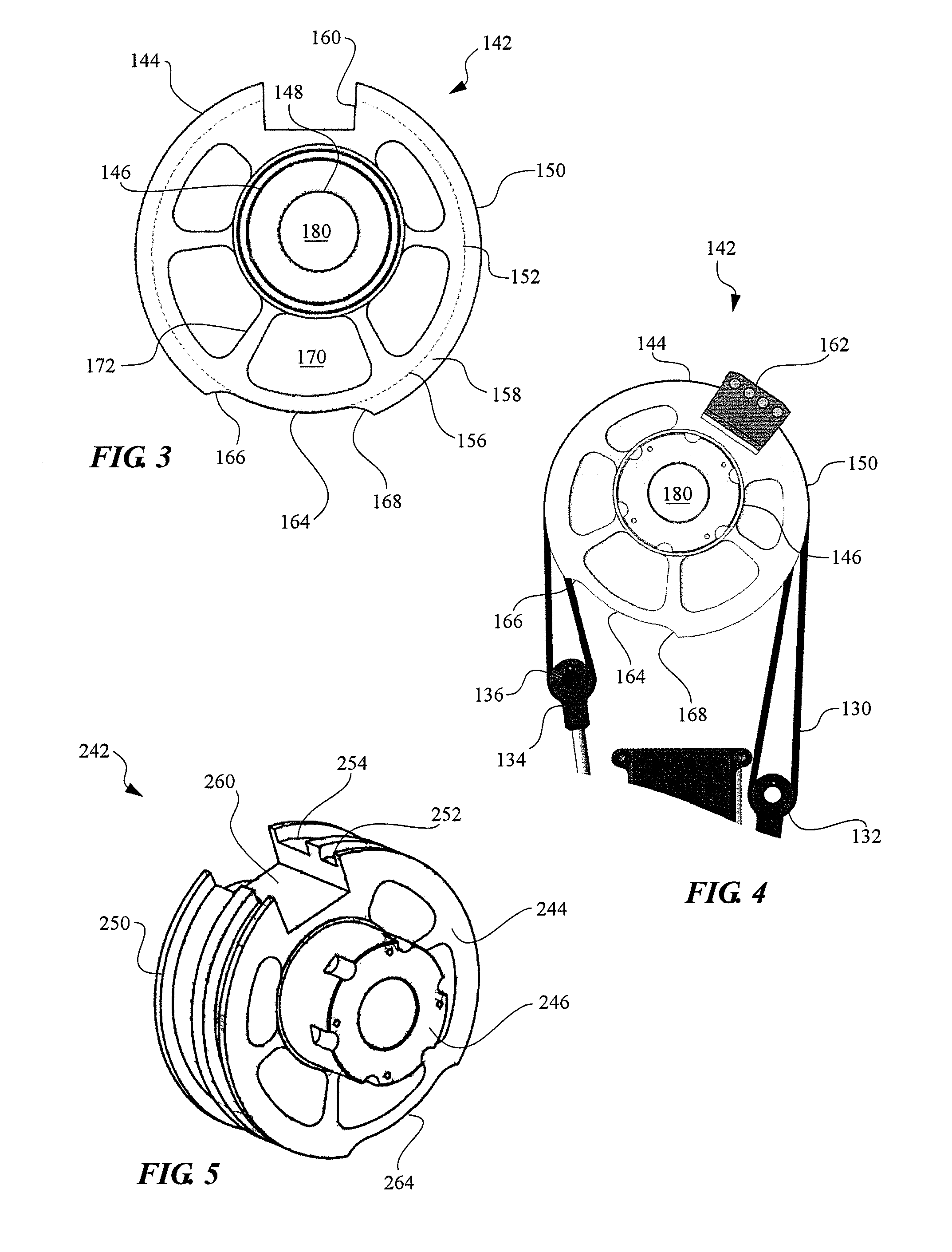Biomimetic Mechanical Joint
a biomimetic and mechanical joint technology, applied in the field of mechanical joints, can solve the problems of not having true human-like capabilities, not having human-like operation, and untethered humanoid, and achieve the effect of high-efficiency operation
- Summary
- Abstract
- Description
- Claims
- Application Information
AI Technical Summary
Benefits of technology
Problems solved by technology
Method used
Image
Examples
embodiment 142
[0041]The circumferential outer surface 150 of the VR pulley 142 can be round, with the center hole 148 formed in a location that is off-set or eccentric from the geometric center of the round outer surface or disc body 144. The center hole 148 can further define the pivot point about which the VR pulley 142 rotates, so that the radial distance between the outer surface and the pivot point is variable along the length of the outer surface 150. Thus, a round pulley with an eccentric center hole 148 and axle portion 146 can form a VR pulley, as shown. In another aspect of the present invention, the VR pulley's disc body and outer surface may not be round, but instead can be an oblong, elliptical or some other non-round body or shape that provides the VR pulley with a continuously variable radius having more or less eccentricity than the round embodiment 142 with an eccentric pivot point illustrated in FIGS. 3-4.
[0042]The VR pulley 142 can include a cut-out notch 164 in the disc portio...
embodiment 200
[0049]The two symmetrically-sized actuators of each fractional antagonistic actuator pair 220, 230 can be linked together over the VR pulley 242 with tendons 280, 290. Although the tendons may be provided in a variety of shapes sizes, the tendons shown in the embodiment 200 can have a belt-shaped profile of defined width and thickness, and can further be configured with dimensions that match with the width and thickness of the corresponding tendon grooves 252, 254. Each tendon can be coupled at its midsection to the attachment block 262 connected to the VR pulley, which device can fix the tendons to the VR pulley and prevent slippage of the tendons within the grooves.
[0050]In the embodiment 200 shown, the tendons 280, 290 can be attached to the ends of the actuator pistons 226, 236 by looping the tendons through end connectors 282, 292 and coupling the ends of the tendons back to the coupling block 262. Additionally, each end connector can be configured with a connector rod 284 that...
PUM
 Login to View More
Login to View More Abstract
Description
Claims
Application Information
 Login to View More
Login to View More - R&D
- Intellectual Property
- Life Sciences
- Materials
- Tech Scout
- Unparalleled Data Quality
- Higher Quality Content
- 60% Fewer Hallucinations
Browse by: Latest US Patents, China's latest patents, Technical Efficacy Thesaurus, Application Domain, Technology Topic, Popular Technical Reports.
© 2025 PatSnap. All rights reserved.Legal|Privacy policy|Modern Slavery Act Transparency Statement|Sitemap|About US| Contact US: help@patsnap.com



